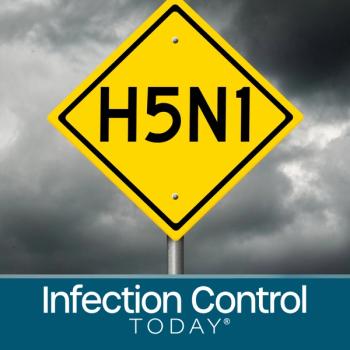
New Study: Hydroxychloroquine Works in Monkeys, Not Humans
The resources used to study hydroxychloroquine (HCQ) would have been better spent on more promising treatment modalities, such as studying Camostat mesilate or nafamostat mesylate therapy for COVID-19, a compound which has been shown to block TMPRSS2.
Last week we have witnessed the resurrection of hydroxychloroquine (HCQ) in the minds of many and even some policymakers as a treatment option for COVID-19. President Trump stated on July 28, 2020: “I happen to think it works”1 and the Ohio Pharmacy Board reversed their ban on the drug upon the request of Ohio’s governor.2
But many leading scientists disagree. Anthony Fauci, MD, a member of the White House Coronavirus Task Force, has told BBC that hydroxychloroquine is ineffective against the coronavirus.3 His opinion is backed by five prospective randomized clinical trials. All of which were not able to document benefit. The latest one was from Brazil, a country which received and apparently used 2 million doses of HCQ from the United States. The Brazilian doctors found no beneficial effect. The five prospective randomized controlled trials are below:
- Borba, et al. (Brazil) – Hospitalized with severe COVID-19 (this was a double blind trial). 18.9% of the patients in the high dose group developed QTc interval abnormalities compared to 11.1% in the low dosage group. The lethality in the high dose group was more than twice that of the low dose control. The study was discontinued. April 24, 2020.
https://jamanetwork.com/journals/jamanetworkopen/fullarticle/2765270 - Boulware, et al. (USA) – Prophylaxis post exposure to SARS-CoV-2 (this trial was double blind). “After high-risk or moderate-risk exposure to Covid-19, hydroxychloroquine did not prevent illness compatible with Covid-19 or confirmed infection when used as postexposure prophylaxis within 4 days after exposure.” New England Journal of Medicine. June 3, 2020.
https://www.nejm.org/doi/full/10.1056/NEJMoa2016638 - Oxford RECOVERY Study: (UK) – Hospitalized Patients. “There was no significant difference in the primary endpoint of 28-day mortality (25.7% hydroxychloroquine vs. 23.5% usual care; hazard ratio 1.11 [95% confidence interval 0.98-1.26]; p=0.10). There was also no evidence of beneficial effects on hospital stay duration or other outcomes.” The Trial was halted because of lack of efficacy. June 5, 2020
https://www.ox.ac.uk/news/2020-06-05-no-clinical-benefit-use-hydroxychloroquine-hospitalised-patients-covid-19 - Skipper, et al. (USA & Canada) – Non-Hospitalized Patients (this trial was double blind). “Hydroxychloroquine did not substantially reduce symptom severity in outpatients with early, mild COVID-19.” Annals of Internal Medicine. July 16, 2020.
https://www.acpjournals.org/doi/10.7326/M20-4207 - Cavalcanti, et al. (Brazil) – Hospitalized Patients. “Among patients hospitalized with mild-to-moderate Covid-19, the use of hydroxychloroquine, alone or with azithromycin, did not improve clinical status at 15 days as compared with standard care.” New England Journal of Medicine. July 23, 2020.
https://www.nejm.org/doi/full/10.1056/NEJMoa2019014
The history of this obsession with hydroxychloroquine dates back to previous coronavirus epidemics and is founded in several in vitro studies which demonstrated efficacy of stopping viral cell entry. One of the most quoted research studies was performed in 2002 and studied the SARS virus (SARS-CoV). The research demonstrated a 99% reduction in viral replication.4 A recent study by Andreani, et al. was published earlier this year and demonstrated in vitro efficacy of hydroxychloroquine with SARS-CoV-2.5 Both of these studies used cell cultures and the Vero E6 cell line which is derived from kidney cells of green monkeys.
So why then is there such a difference between the randomized control trials and the in vitro studies for hydroxychloroquine? The answer can be explained by difficulties in extrapolating results between species. As illustrated by the story of the lizard and mouse. The lizard is holding his tail, and while eating it, encourages the mouse to do the same. With the lizard stating, “Don’t worry, it will grow back, mine always does.”
Maybe we should not follow the lizard’s lead. Hoffmann, et al.6 recently published the mechanisms of hydroxychloroquine’s action in both the Vero E6, green monkey kidney cell line, and the Calu-3, human lung cancer cell line. The mechanism of action of hydroxychloroquine is to block entry of the virus into cells. Viral entry requires a helper enzyme. In the Vero E6 cell line, this enzyme is cathepsin L which hydroxychloroquine blocks. However, in the human lung cell line, the helping enzyme is TMPRSS2. Hydroxychloroquine does not effectively block this enzyme and cellular entry of the virus occurs.
Thus, at this point, there is no compelling evidence to recommend the use of hydroxychloroquine for clinical use and several large organizations have suspended research involving this drug.7 There has been an enormous amount of valuable scientific resources which have been devoted to answering this scientific, now political, issue. These resources would have been better spent on more promising treatment modalities, such as studying Camostat mesilate or nafamostat mesylate therapy for COVID-19, a compound which has been shown to block TMPRSS2.8
References:
- Forgey Q, Oprysko C. ‘I happen to think it works’: Trump doubles down on hydroxychloroquine. Politico. July 28, 2020.
https://www.politico.com/news/2020/07/28/fauci-trump-ineffective-coronavirus-treatment-383809 - Filby M. Ohio pharmacy board reverses ban on hydroxychloroquine after GOP Gov. DeWine’s request. USA Today. July. 30, 2020.
https://www.usatoday.com/story/news/health/2020/07/30/ohio-pharmacy-board-reverses-hydroxychloroquine-ban-mike-dewine-request/5547751002/ - Coronavirus: Hydroxychloroquine ineffective, says Fauci. BBC. July 29, 2020.
https://www.bbc.com/news/world-us-canada-53575964 - Keyaerts E, Vijgen L, Maes P, et al. In vitro inhibition of severe acute respiratory syndrome coronavirus by chloroquine. Biochemical and Biophysical Research Communications 323 (2004) 264–268.
https://reader.elsevier.com/reader/sd/pii/S0006291X0401839X - Andreani J. Le Bideau M. Duflot I., Et al. In vitro testing of combined hydroxychloroquine and azithromycin on SARS-CoV-2 shows synergistic effect. Microbial Pathogenesis. Volume 145, August 2020, 104228.
https://www.sciencedirect.com/science/article/pii/S0882401020305155 - Hoffmann M, Mosbauer K, Hofmann-Winkler H, et al. Chloroquine does not inhibit infection of human lung cells with SARS-CoV-2. Nature. July 22, 2020.
https://www.nature.com/articles/s41586-020-2575-3 - Beaubien J. WHO Halts Hydroxychloroquine Trial Over Safety Concerns. NPR. May 25, 2020.
https://www.npr.org/sections/coronavirus-live-updates/2020/05/25/861913688/who-halts-hydroxychloroquine-trial-over-safety-concerns . - Markus Hoffmann, Simon Schroeder, Hannah Kleine-Weber, Marcel A. Müller, Christian Drosten, Stefan Pöhlmann. Nafamostat Mesylate Blocks Activation of SARS-CoV-2: New Treatment Option for COVID-19. Antimicrobial Agents and Chemotherapy. DOI: 10.1128/AAC.00754-2
https://aac.asm.org/content/64/6/e00754-20
Newsletter
Stay prepared and protected with Infection Control Today's newsletter, delivering essential updates, best practices, and expert insights for infection preventionists.






